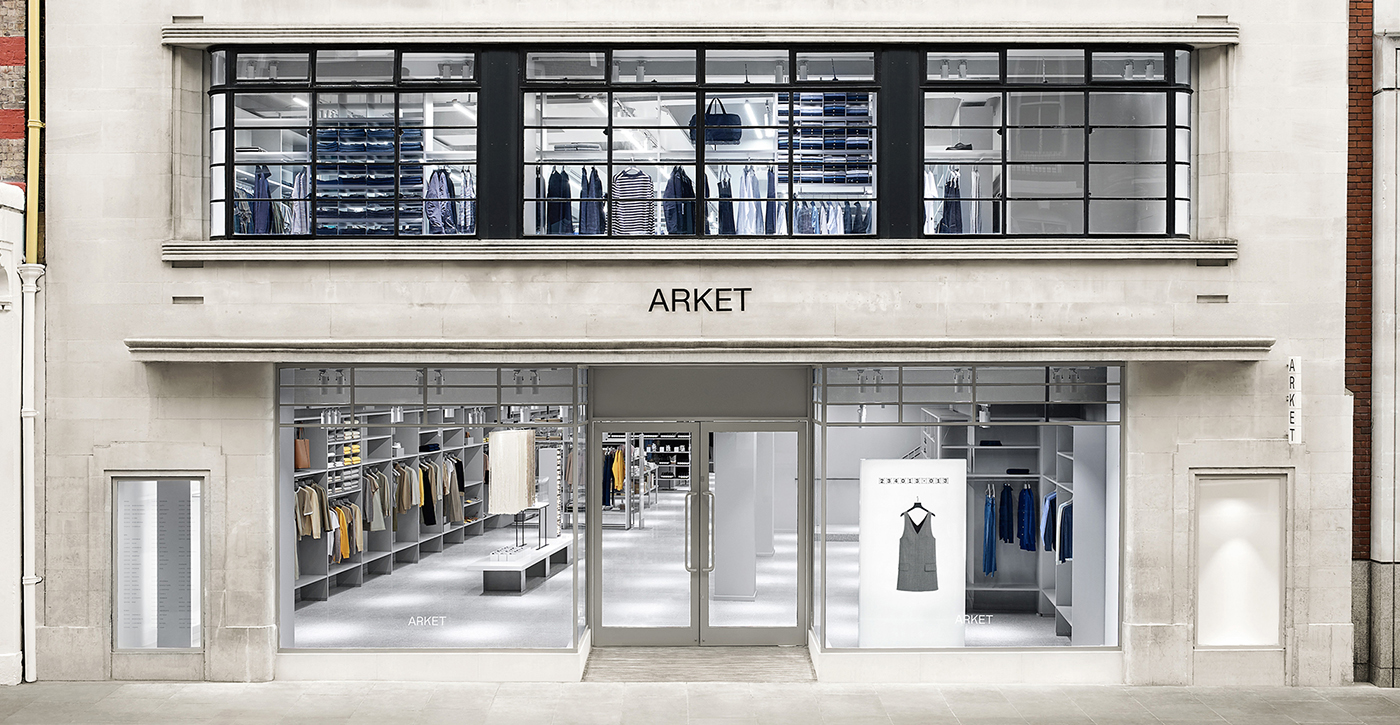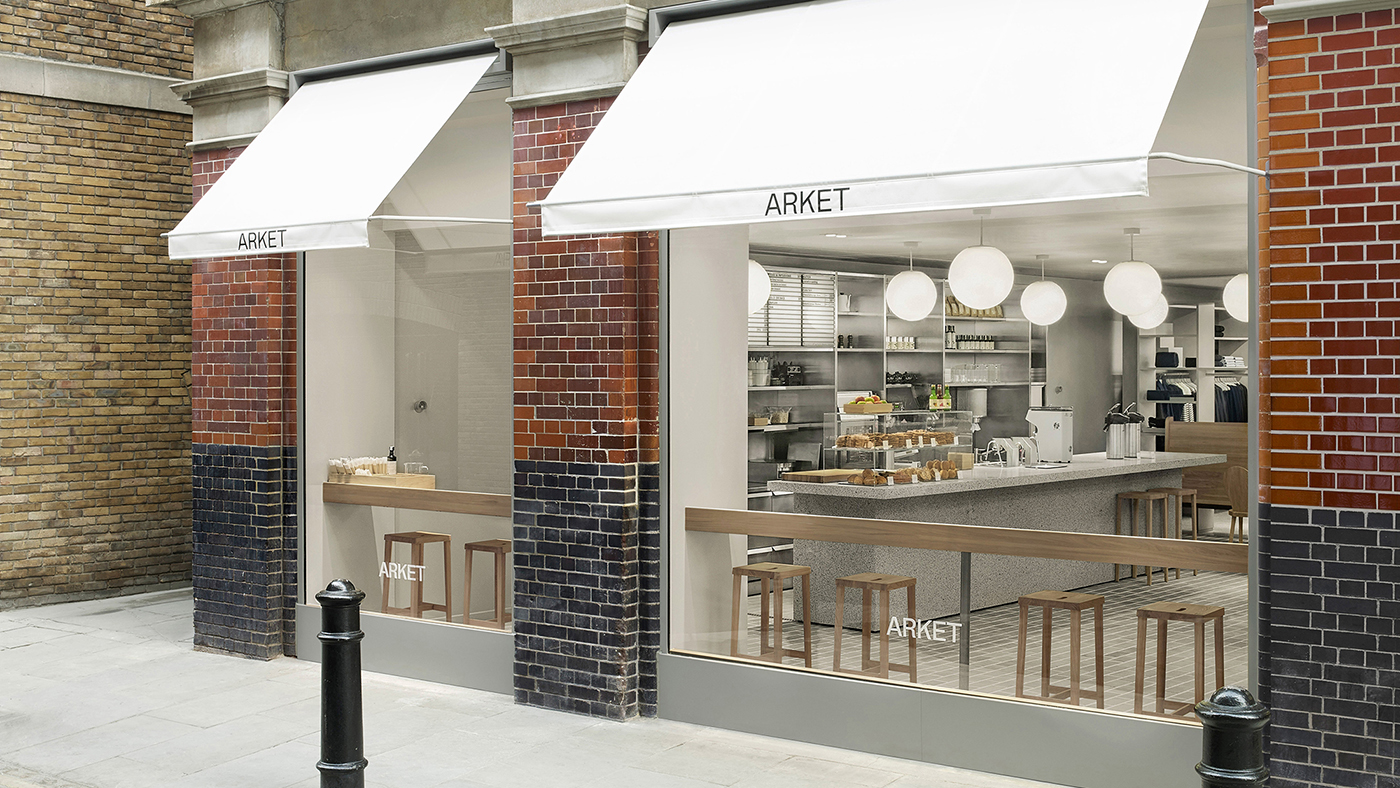New Nordic cool: Arket
Jesper Borjesson, head of men's design at the H&M sister brand, explains how he has created a wardrobe of beautifully simple menswear

I’ve been involved with Arket since day one – since I started in October 2014, sitting by myself in a big office in Stockholm with 16 empty desks. Until January 2015, I was on my own – the rest of the team came from within the H&M group, and couldn’t begin so soon. As the only outsider, I had a head start.
The first thing I did was to build up an archive of great vintage menswear pieces – because if you think about it, in menswear, where do you start from? So, I decided to go back to see what the reference was for every item you can see in a contemporary wardrobe. "Arket" actually means "blank sheet of paper" in Swedish, so that’s how I saw it – I was starting with nothing. But soon there was a growing rack of bad-smelling vintage clothes, many from dealers in London, actually.
I found things like a great trench coat, and blazer, even a bulletproof vest, which later become a beautiful layering piece for us. And then there was a team of five of us, adding more and more pieces and discussing what it is that makes a piece of clothing an archetype. And what is a market in today's world? And how are people spending their time and what are they interested in? We came back to London several times and realised that the food industry is much more interesting to look at when compared to retail – so much more is happening there, and the sustainability aspect of local food is growing in importance.
The Week
Escape your echo chamber. Get the facts behind the news, plus analysis from multiple perspectives.

Sign up for The Week's Free Newsletters
From our morning news briefing to a weekly Good News Newsletter, get the best of The Week delivered directly to your inbox.
From our morning news briefing to a weekly Good News Newsletter, get the best of The Week delivered directly to your inbox.

I developed a metaphor. Clothing design could be about taking good ingredients and letting them simmer. You need the right ingredients and the longer you let them simmer, the better the dish will be. So we decided it wasn’t so much about making loads of new products, but finding the right ones – the archetypes – and then re-doing the same item again, and again and again.
The archive is the collection’s point of departure, a solid foundation of products you want to find over and over again. Each item in the product family is intended to be a perfect version of itself – our customers can be certain that everything offered has earned its place on the shelf. Essentially, we are trying to play through the seasons, varying materials, colours and proportions to create an ideal everyday uniform.
Therefore, we developed fabrics ourselves with our suppliers and looked to make the same pieces – a jacket, knit, T-shirt, coat – in different fabrics and colours. For example, in what we call the GSM Program, the 150g T-shirt is more like an underwear piece and the 170g is like a standard T-shirt, while the 220g is more like a sportswear quality. We worked in a similar way with our Merino Yarn Project, with an organic merino yarn, sometimes using it in 100% quality, sometimes mixing it. Our intention is that over time we will narrow things down further. Keeping styles that work. Like, for trousers it's three silhouettes; regardless of the materials, those are our three silhouettes.
We now have quite a few items that have grown on us and that we've had since the beginning, like our pyjama-striped shirts that you can wear in so many different ways. Then there are the chinos – I've never been a chino guy but I'm actually wearing a lot of them right now. I think I've never found the right fit before, so I've never felt contemporary wearing them. But that’s changed – in particular there’s a workwear-inspired type of chino that I now wear day in and day out. We also have this two-in-one outerwear – we call it our 2 in 1 Series – which has detachable liners in a bomber jacket or waistcoat style. The liners come in a nylon fabric from Japan – it's really cool – and they attach to outerwear pieces. The T-shirts are great as well, because we developed the fabric ourselves. And the knitwear stands out, too.
A free daily email with the biggest news stories of the day – and the best features from TheWeek.com
Beyond the clothing, we also wanted to explore what a modern-day market might be like. So, as well as the website, we’ve created stores. The first was launched in London and opened last year, in August, in Regent Street. Since then, three more have opened in the UK and we’ve established several in Europe. We came to London first because it felt right – we’d forged a connection with the city by researching vintage garments here, and we liked the types of big buildings that exist there. And your capital is the centre of Europe, in my opinion.
After choosing where to launch, we had to develop a concept, and here we drew on our ideas about what people enjoy. Like, where do you hang out at a party? You may hang out in the kitchen. And then you think about what is missing when you walk around the busiest streets in London, like you may want to get a drink or you may want to sit down or relax a bit in very hectic areas. We had been to Japan a few times and noticed that in some stores they had these big plants, and they were selling flowers; you could sit down and re-charge and have a coffee.

The Arket store idea took shape, and so today you will find big spaces with a café that is inspired by the New Nordic Manifesto for food, and a whole range of items on sale, from kitchen utensils to interiors furnishings to books to garden pieces. We want to show that we understand that clothes are not the only thing in life today that is relevant. What we’re aiming for is a modern-day market that will offer essential products for men, women, children and the home. The mission is to democratise quality through widely accessible, well-made, durable products, designed to be used and loved for a long time.
The theme of the other items we are choosing to sell is loosely: things for the home. I guess there's something about the busy digital world that we live in that makes people react against it – I do feel like people are wanting to get more domestic; you want to get nice things for your house, you want to cook more. We are currently working to increase our offer of domestic gadgets, for example, and to target them at men. One of the best-selling items in store is a well-designed cheese slicer from Norway.
Ultimately, what you buy is about the values and beliefs that you have. So, it's great now that we are getting bigger and bigger in the market and we can start to challenge suppliers that haven't been using recycled materials, for example. We can start to challenge them to do things in our way, and that's when things become really interesting. Like, we started to introduce organic cotton in our denim; it's exactly the same trouser, just a little bit better for the environment. It has the same durability and we haven’t changed the designs; we just improved the quality.
Besides being a consequence of a focus on long-lasting designs and good-quality production, sustainability has been a primary consideration in developing Arket and naturally incorporated in all processes, from the choice of suppliers and materials to informing customers about how to care for their products to prolong their lifespan.
In this way, maybe Arket can not only make a difference to your wardrobe, but also become a lifestyle brand that makes a difference on a more profound level.

